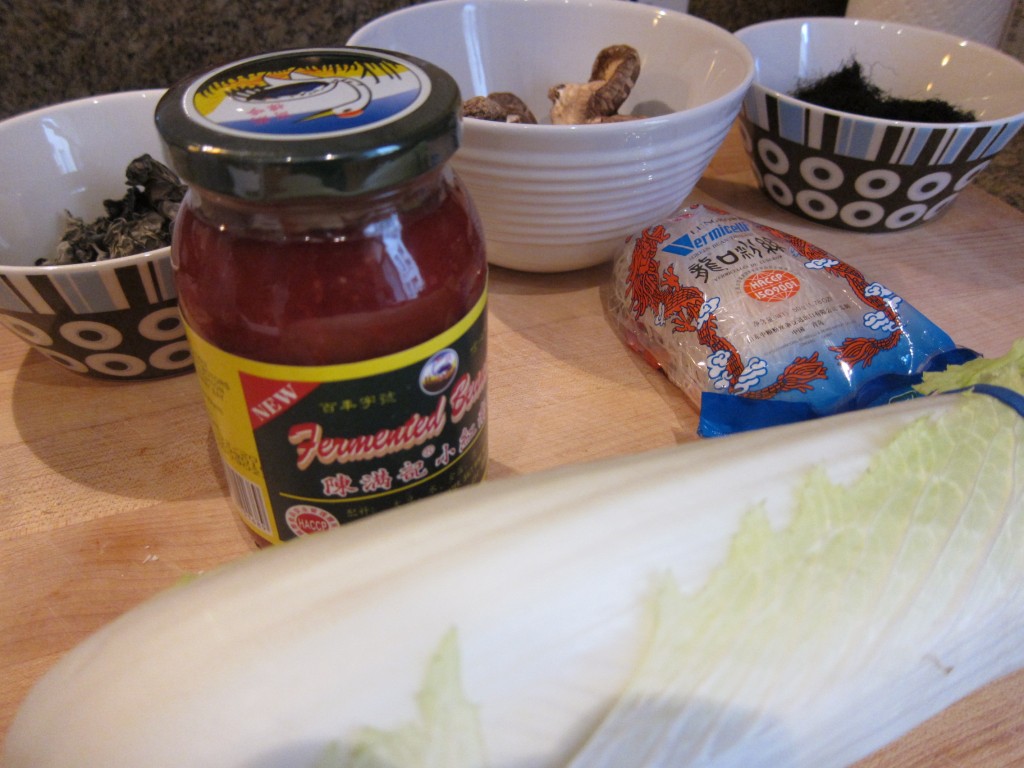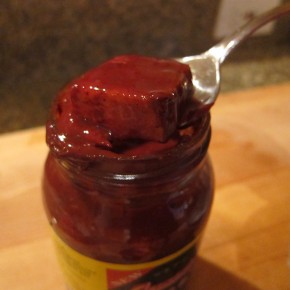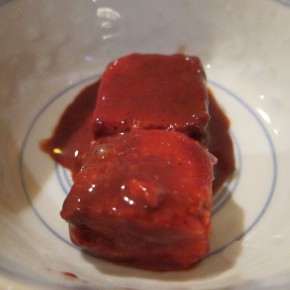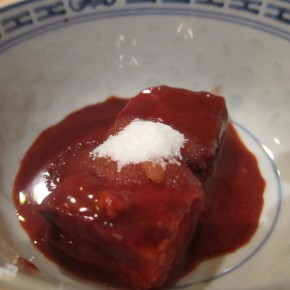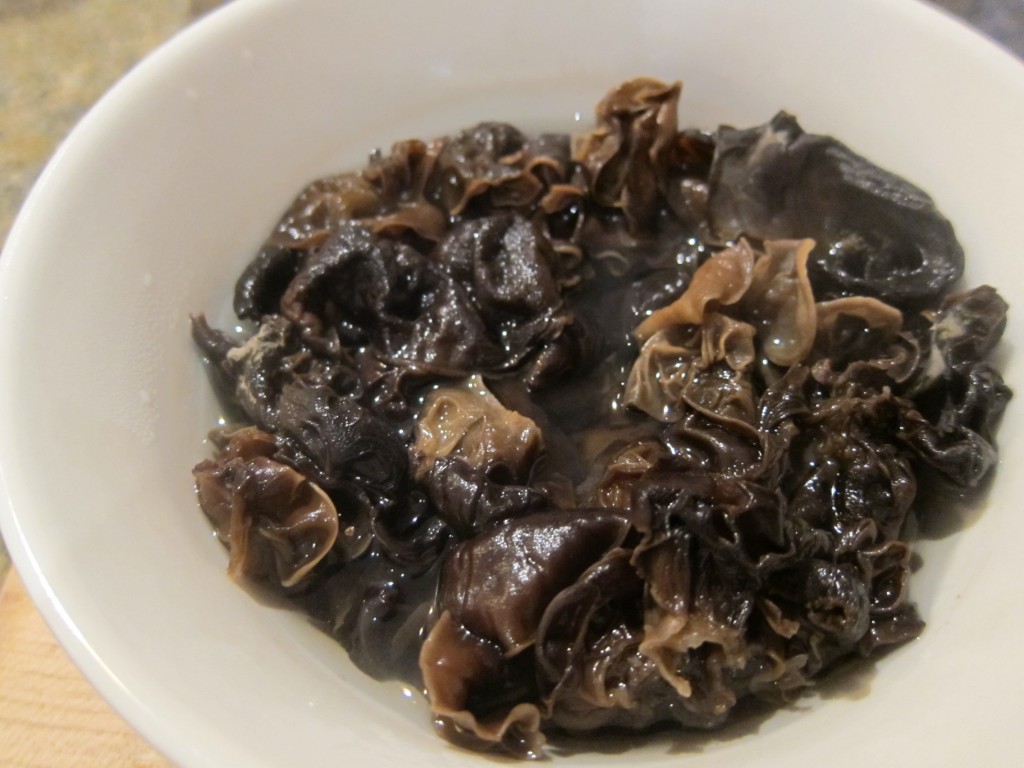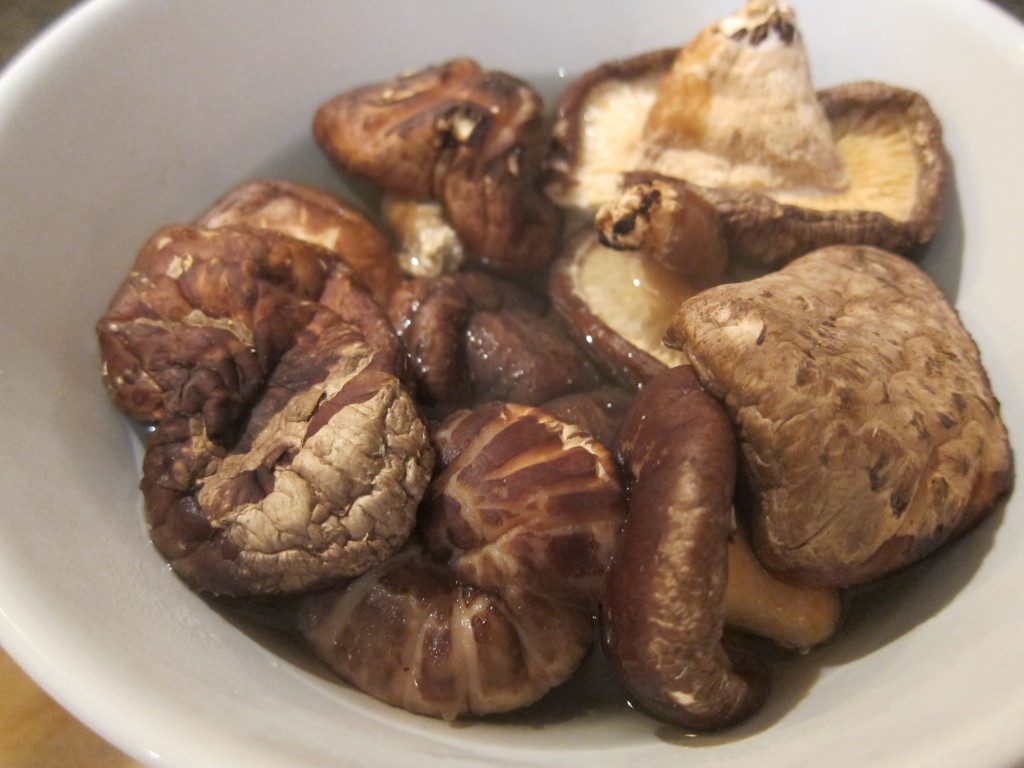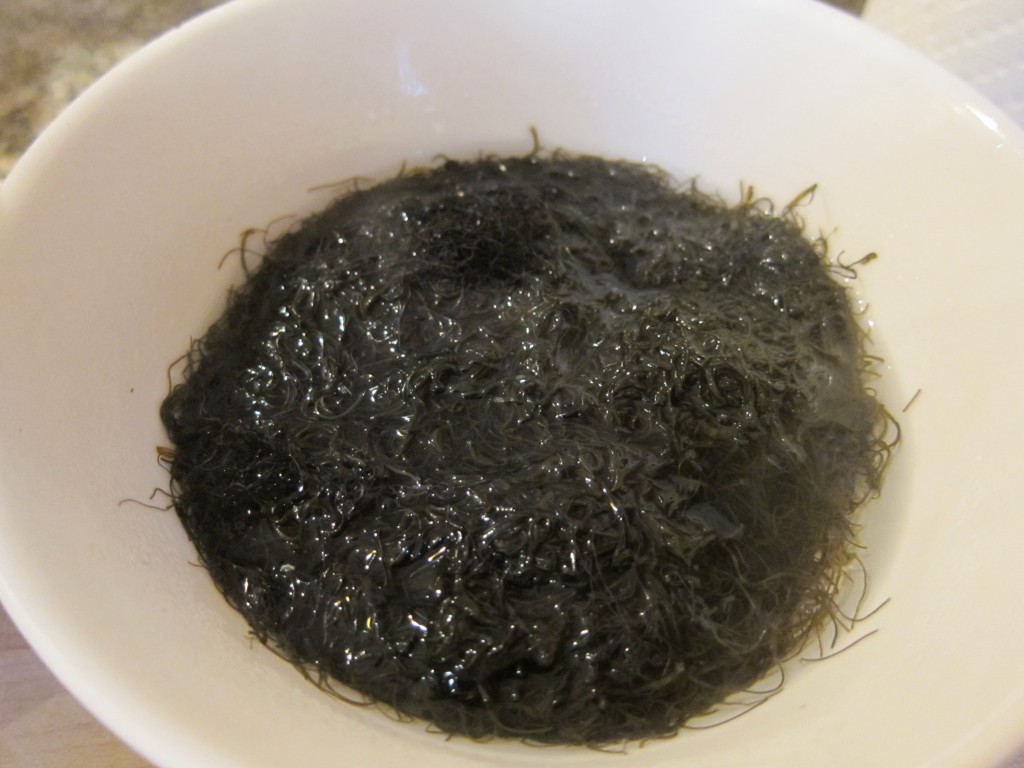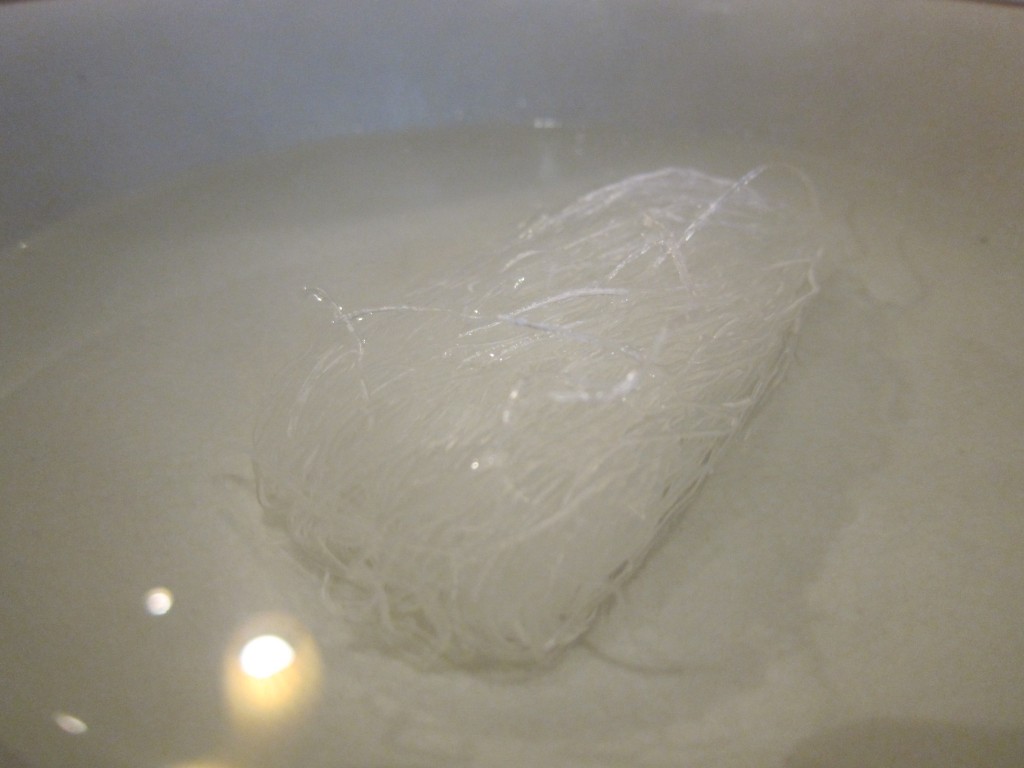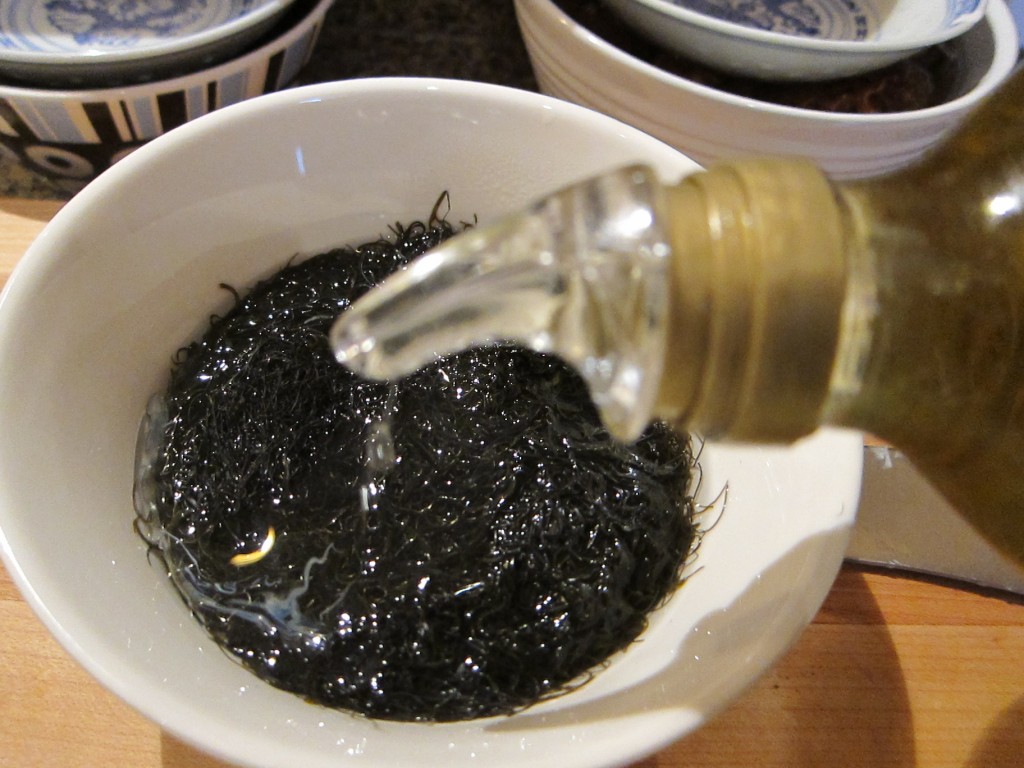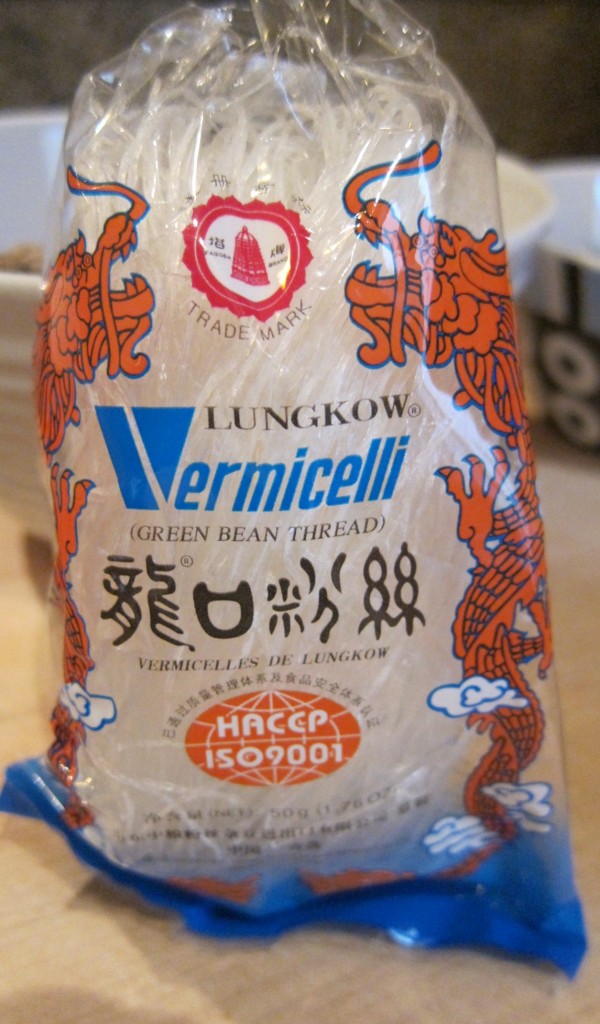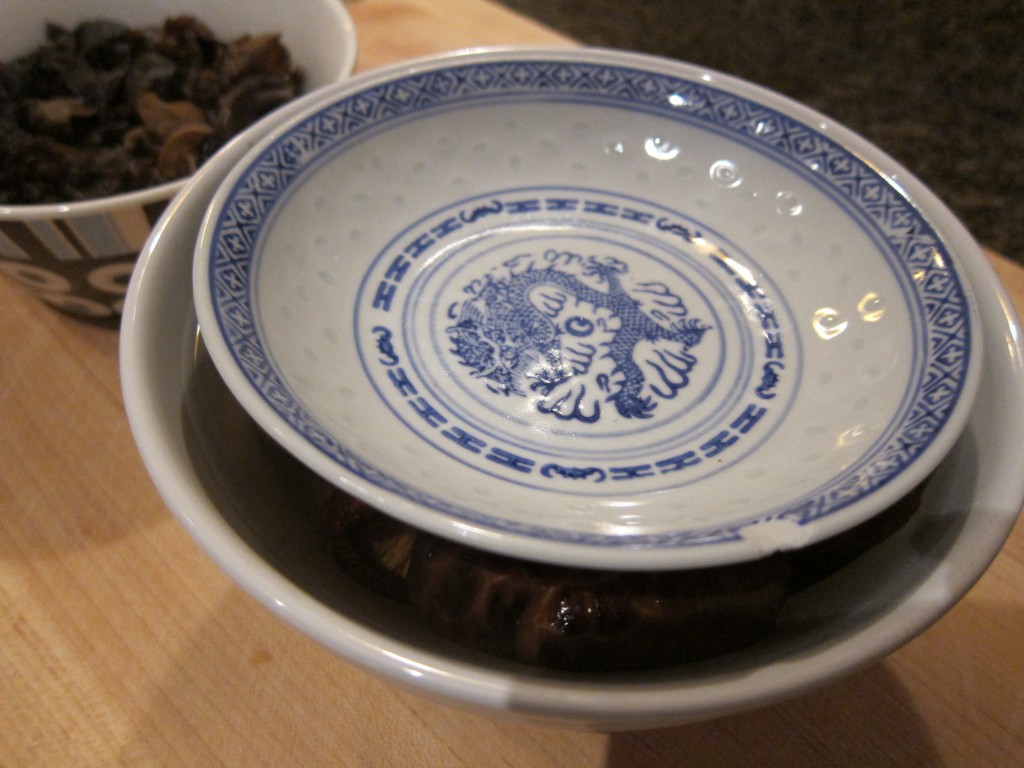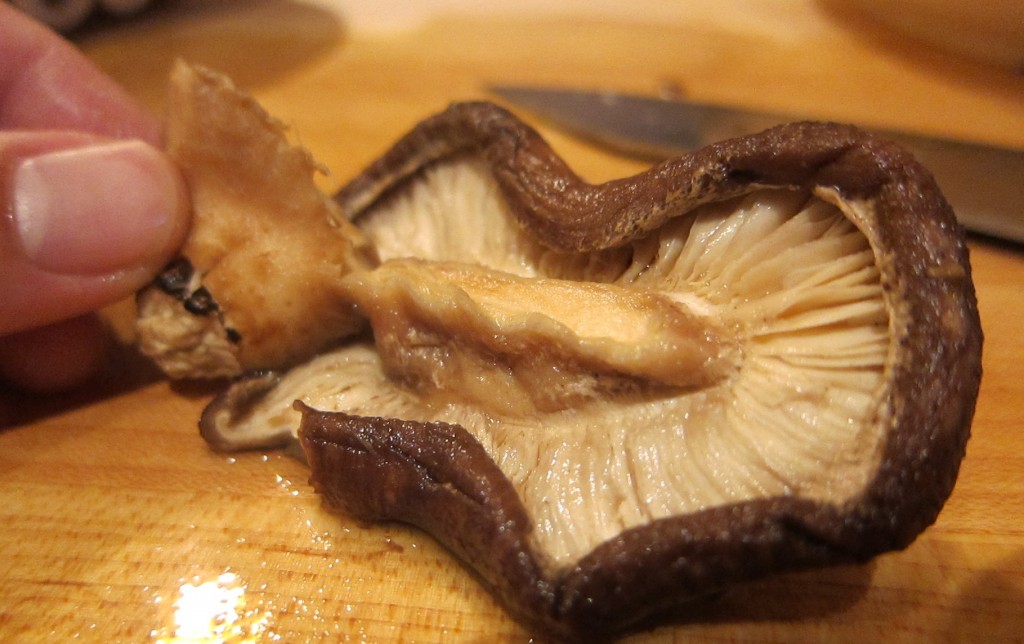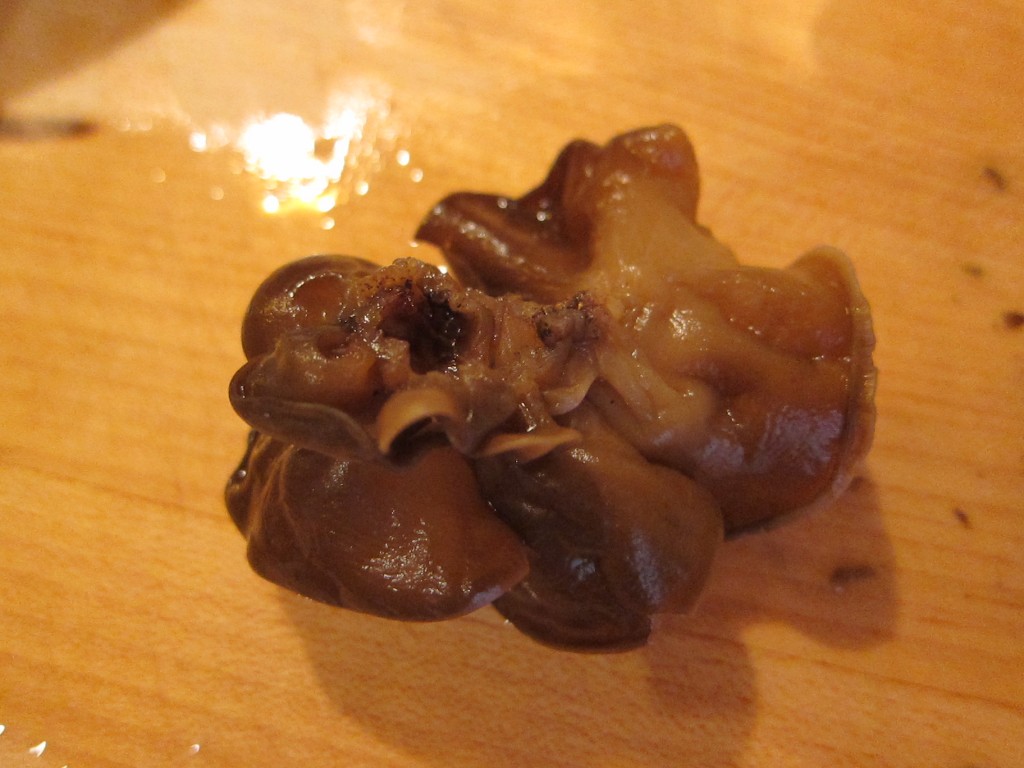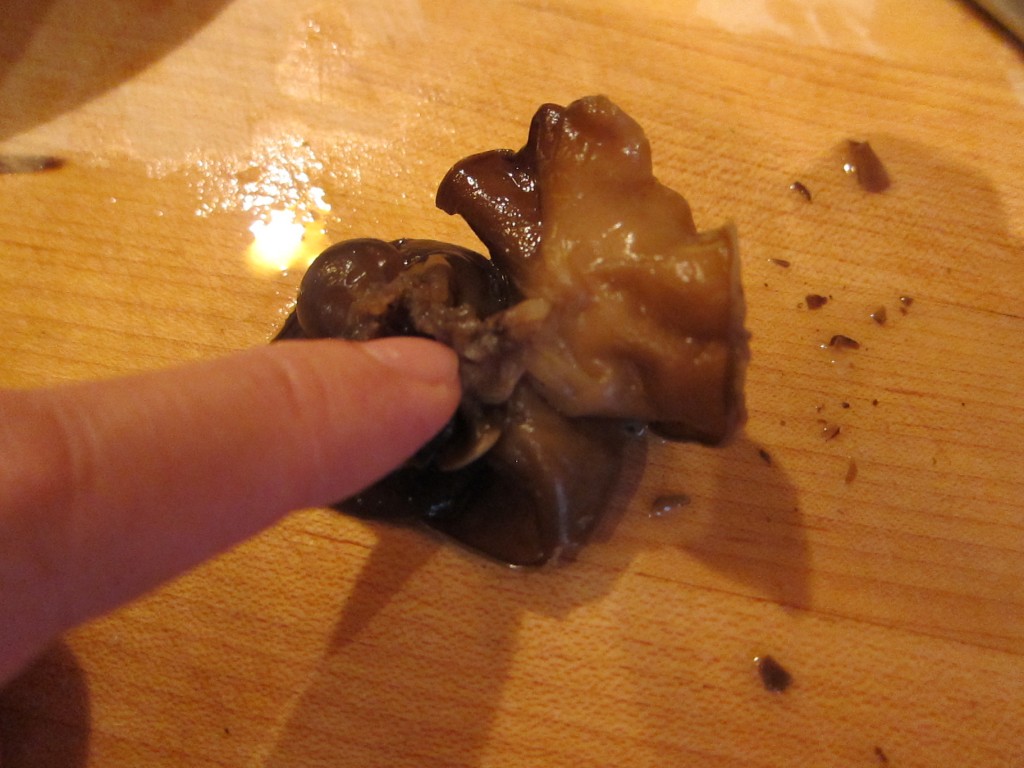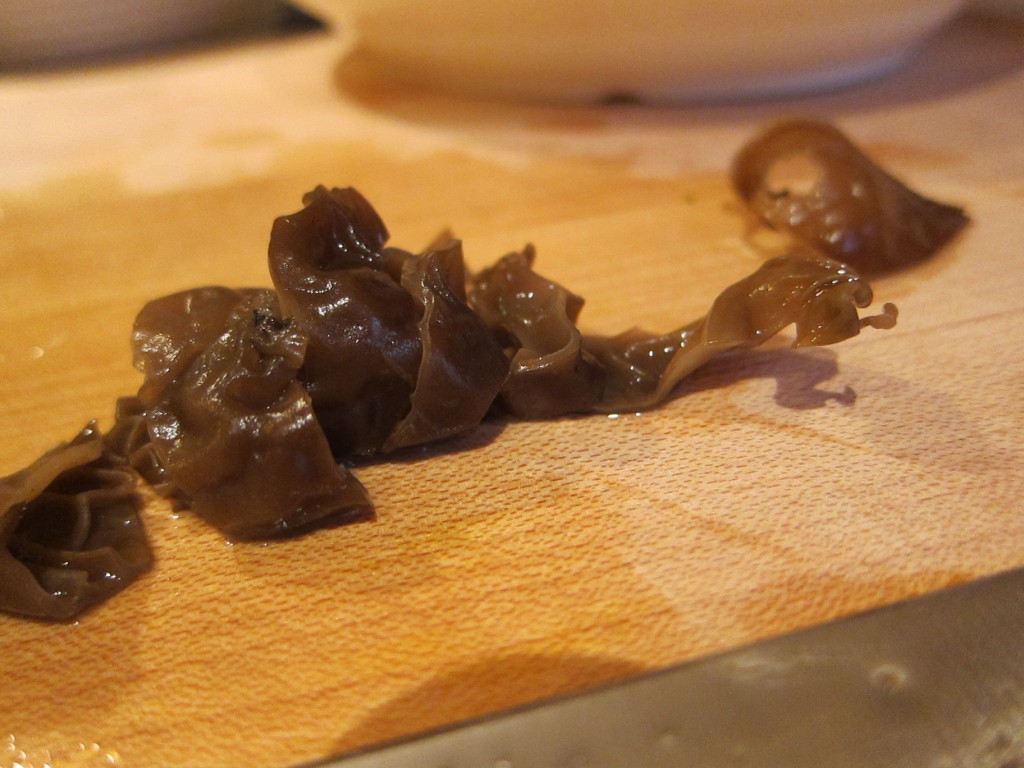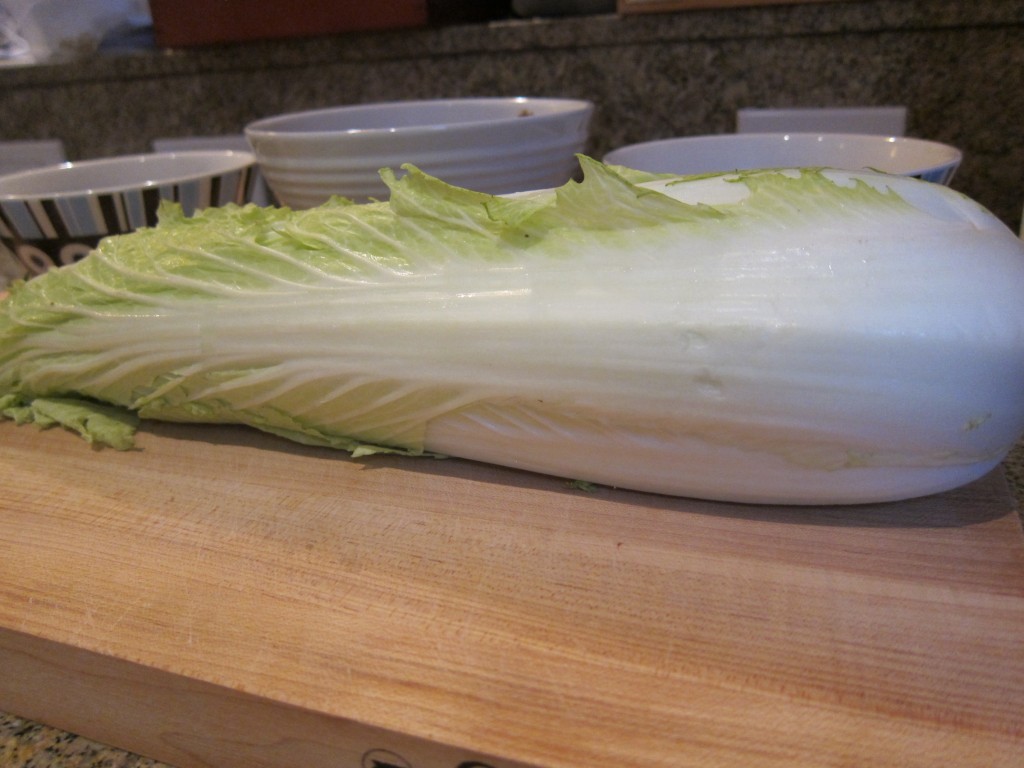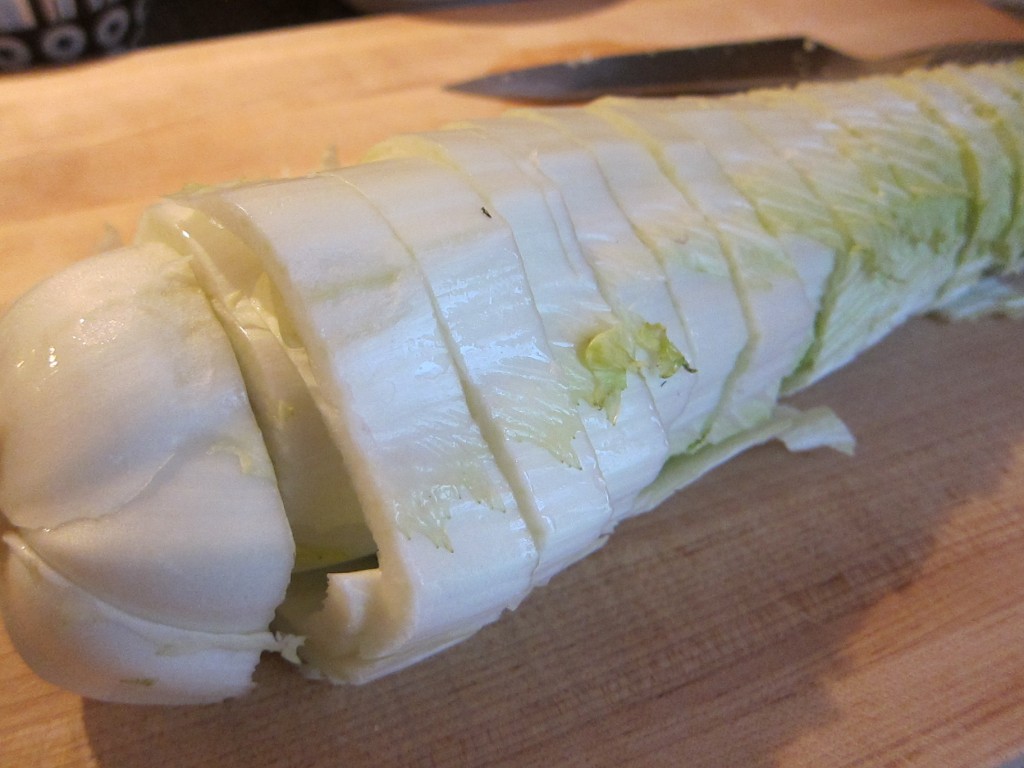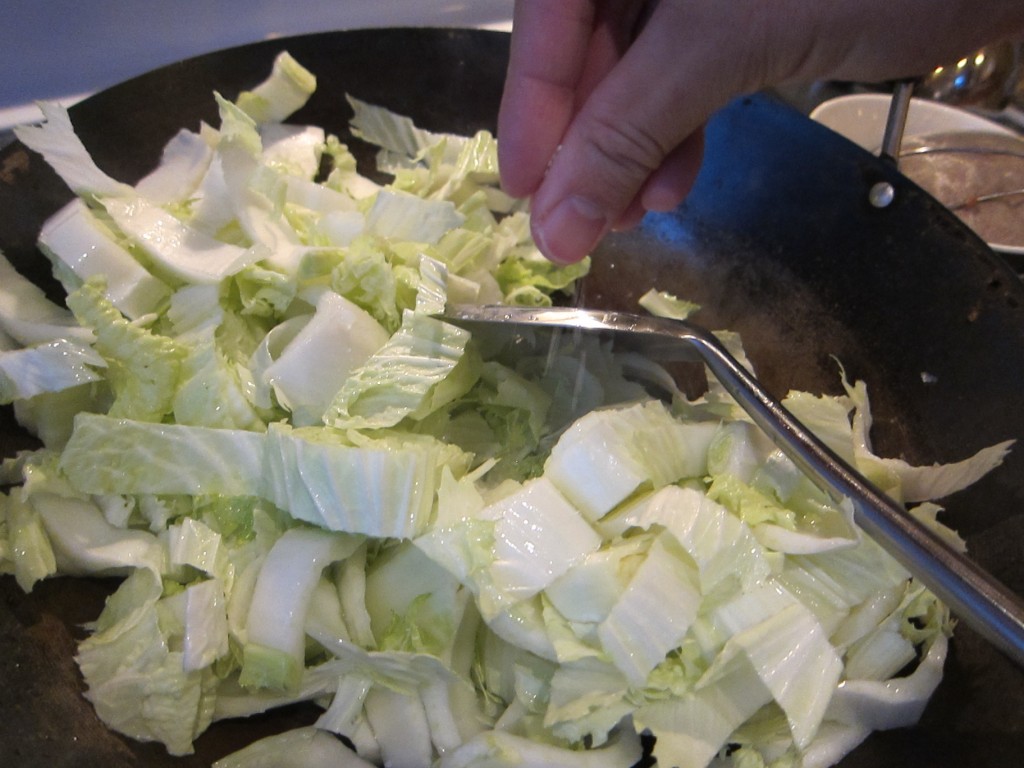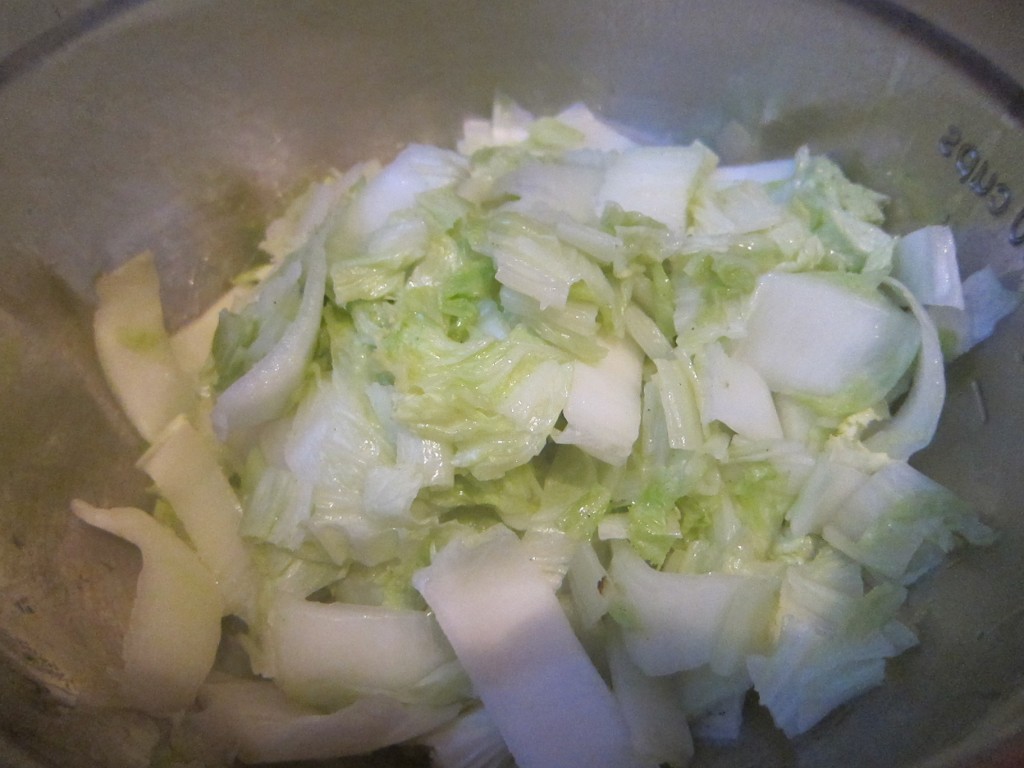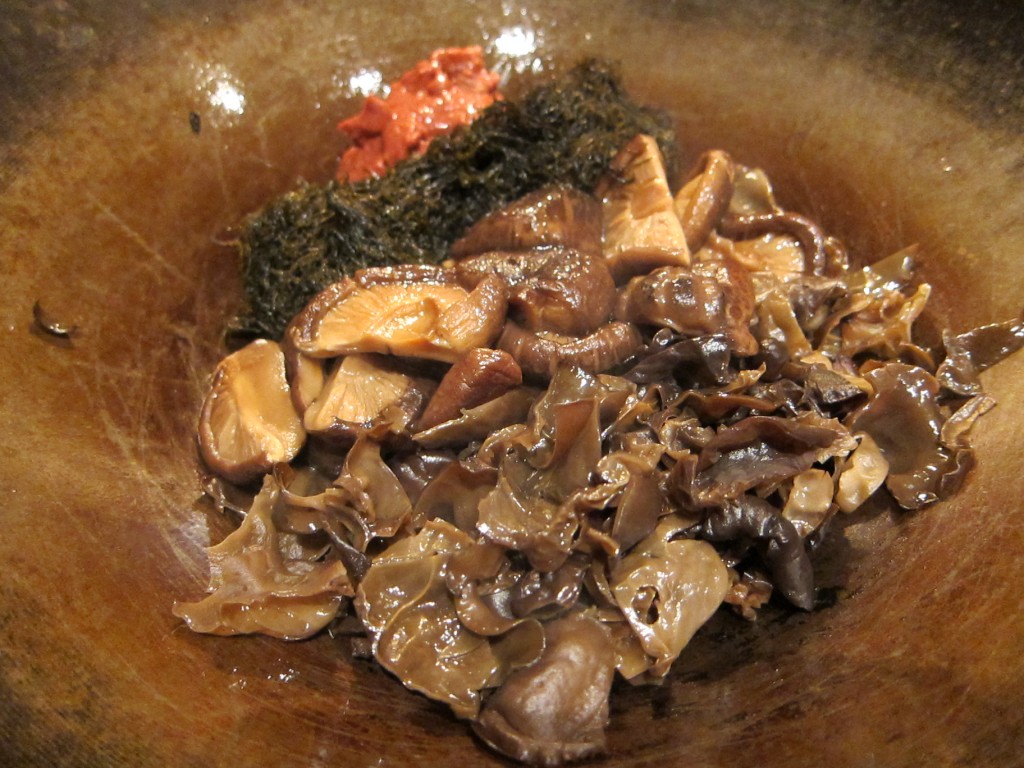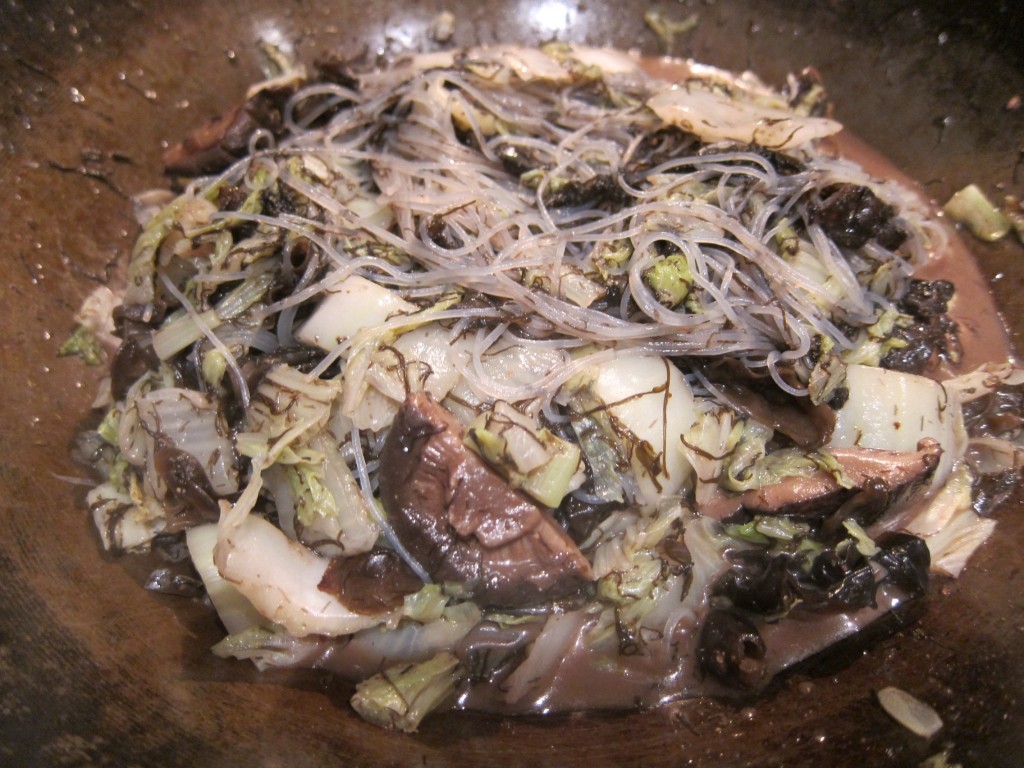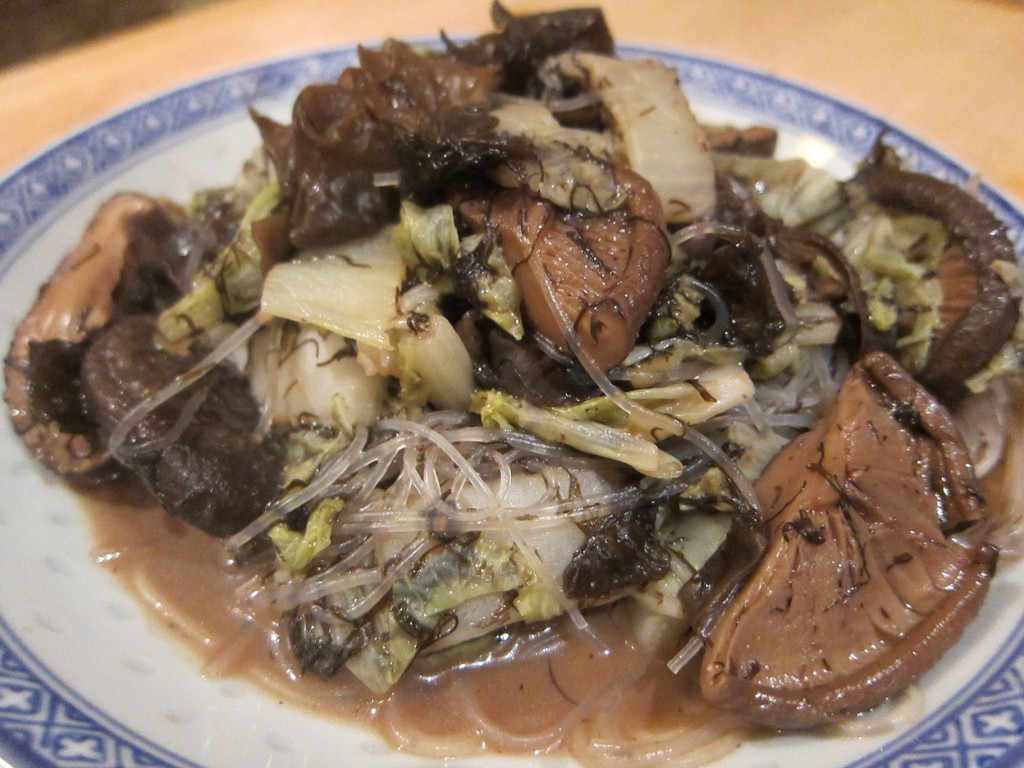Happy Chinese New Year! Gung Hay Fat Choy!
Given a new year is almost upon us, I thought I’d start fresh and introduce my new domain name www.GowsTakeout.com which is replacing GowsTakeout.Wordpress.com. Hopefully you like the new design. I’m hoping it will be easier to find recipes and restaurant reviews especially as I add more content to the site.
I also decided that posting a Buddha’s Delight (jai) recipe would be appropriate. Jai is a customary first dish to have on Chinese New Year’s Day.
When we were in Vancouver this past December, my mum made a simple jai for dinner one night and I decided to take notes. Although it’s not difficult to make, it did take some time to get all the ingredients prepped.
2 large cubes fermented red bean curd, reserve a bit of liquid
1 tsp sugar
1 handful black fungus/cloud ear (wun yee)
8 dried shiitake mushroom (dong gu)
1 “chunk” dried black moss (fat choy)
1 bundle rice or mung bean thread (fun see)
1 Chinese cabbage (preferably Peking/Tianjin cabbage)
Heat a pot of hot water.
Place two cubes of red bean curd and a bit of the liquid in a small bowl. Add sugar. Mash together until you have a smooth paste. Set aside.
Place black fungus, dried mushrooms, dried black moss, and rice or mung bean noodle in separate bowls. Pour enough hot water over each ingredient to fully submerge.
For the dried black moss add a bit of oil. My mum says this helps the dirt rise to the surface.
For the mung bean, my mum says never to get brands “Made in Taiwanese” but to stick with “Made in China” brands. Why? The former tend to become really mushy when cooked while the latter has a much better texture. She also says to look for the HACCP ISO 9001 certification which when I looked it up said this, “Hazard Analysis and Critical Control Point (HACCP) certification is synonymous with food safety. HACCP is a food safety risk management system that addresses biological, chemical and physical hazards through anticipation and prevention rather than by a finished product inspection.”
The dried black moss and mung bean should be easy to cover with water. However I sometimes have issues with the black fungus as it expands and the mushroom since it floats! To mitigate this and ensure a complete soak I use a plate to cover each ingredient. Set aside and let soak for 30 minutes.
Now take each mushroom, squeeze the excess water from it, and slice the stem off which tends to be hard. Cut each mushroom in half or leave whole. Place in small pot.
Add to the mushrooms, 1 tsp dark soy sauce, 2 tsp canola oil and 1/2 C water mixed with 1 tsp cornstarch. Mix together. Put pot on stove over medium high, cover, and braise the mushrooms for 30-45 minutes. Set aside.
While the mushrooms are braising, turn your addition to prepping the rest of the ingredients. Take each piece of black fungus, feel it for this hard part in the middle, cut it out, and toss in the trash.
Then slice the black fungus. Stir fry in a bit of oil for a few minutes. Set aside.
Drain the dried black moss of water and dirt. Set aside.
Drain the mung bean of water. Set aside.
Let’s turn our attention to the Chinese cabbage. You can use the regular napa cabbage but mum’s advice was to use the one that “is not the puffy one”. She believes it holds up better in this dish. It’s longer and more narrow than the napa cabbage.
I looked it up and it was called Peking or Tientsin cabbage.
Slice the entire cabbage crosswise and rinse.
Stir-fry cabbage in a bit of canola oil and pinch of salt. Set aside.
That should complete the prep work which is the bulk of this recipe.
Heat wok over medium high heat. Add black fungus, braised mushrooms (including any liquid), dried black moss, and bean curd paste mixture to the wok.
Mix together and add enough water to cover the ingredients. Cover wok with lid. Simmer for 30-40 minutes. Stir periodically and careful that the water doesn’t fully evaporate. If you notice it is then adjust heat and/or add a bit more water.
Add the Chinese cabbage and mung bean to the wok and incorporate. The dish should be fairly moist with a bit of liquid remaining. If too dry add a bit more water and simmer a bit longer.
Taste. If it seems a bit bland you may have added too much water or not drained an ingredient well enough before adding to the wok. Simply add a bit of bean curd or salt to the dish and stir together.
Overall I was happy with jai dish. Anna commented that my mum’s tasted more “beany”. I probably added too much water somewhere along the way. Next time I make this dish, I may add a bit more bean curd upfront (i.e. use 2 1/2 cubes) and/or be extra careful on draining water from ingredients or watching how much water I add.

